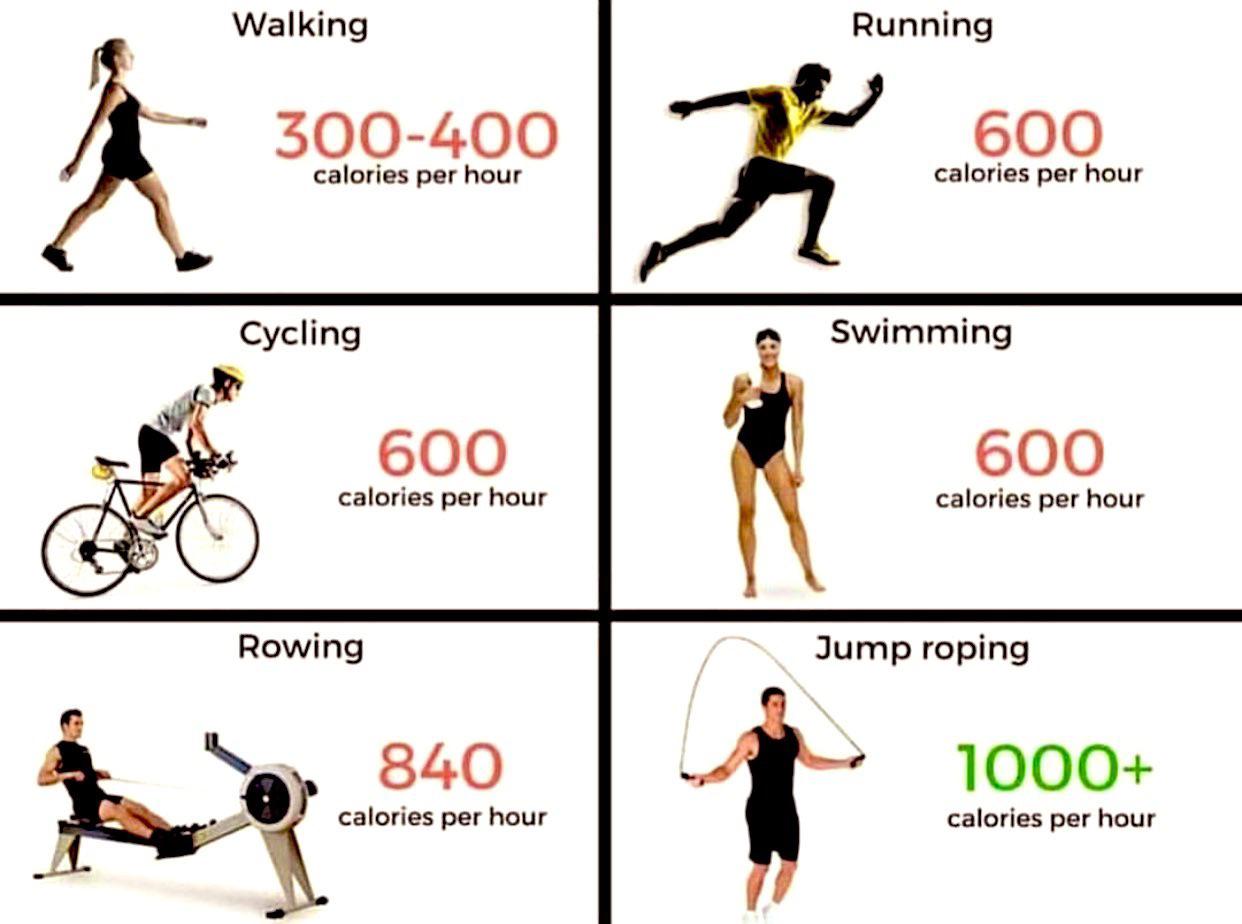The desire to burn calories has become increasingly prevalent among individuals as society has become more health-conscious and focused on achieving physical fitness goals. In addition, as people have become more sedentary due to technology and office jobs, maintaining a healthy weight has become paramount to preventing chronic diseases and enhancing overall well-being.
In today’s fast-paced world, people seek ways to improve their physical fitness and reduce their risk of health problems such as obesity, diabetes, heart disease, and hypertension. Burning calories through regular exercise has become a popular way to achieve this goal, as it helps to increase metabolism, build muscle mass, and improve cardiovascular health.
In addition, burning calories through exercise can also provide mental benefits, such as reducing stress levels and improving mood. As more individuals recognize the importance of physical activity in maintaining good health and well-being, the desire to burn calories has become a driving force in modern society.
How to Burn 2500 Calories a Day?
You can burn 2500 calories if you walk 5-6 hours or run 3.5 hours. Additionally, you can cycle for 4 hours or swim for 5 hours to burn approximately 2500 calories. My favorite way to burn 2500 calories is walking because walking is not hard, and you can burn calories approximately quickly by using complicated cardio exercises.

Burning 2500 calories daily may seem daunting, but it is possible with the right strategy. This calorie burn can be achieved through various physical activities like walking, running, cycling, or swimming. Depending on your fitness level and preferences, you may choose one or a combination of these exercises to reach your goal.
Walking is perhaps the most accessible and straightforward way to burn calories. As mentioned in the background, walking for 5-6 hours can help you reach the target of 2500 calories. To get the most out of your walking session, you may want to consider increasing the intensity and speed of your walk. Walking uphill or on uneven terrain can provide a more challenging workout, and incorporating intervals of jogging or sprinting can boost your calorie burn and cardiovascular strength.
Running is another high-intensity option to burn calories quickly. Running moderately for 3.5 hours can help you achieve the daily target. However, running requires more stamina and may impact your joints more. Make sure to choose proper footwear and terrain to reduce the risk of injury and gradually increase your speed and distance over time.
Cycling is a low-impact exercise that can help you burn calories while enjoying the outdoors. It’s estimated that cycling for 4 hours can help burn approximately 2500 calories. Cycling can also be done on indoor stationary bikes, which may provide additional features such as resistance levels and virtual classes. To get the most out of your cycling session, adjust your bike to fit your body correctly and vary your speed and intensity to challenge your muscles and cardiovascular system.
Swimming is an excellent full-body workout that can burn calories while being gentle on your joints. Swimming for 5 hours can help you reach your daily target. Swimming can also provide additional health benefits, such as improved lung function and reduced stress. To maximize your calorie burn, vary your strokes and incorporate interval training. Also, use proper swimming form and breathe efficiently to avoid fatigue and injury.
Apart from these exercises, other activities such as dancing, playing sports, or doing high-intensity interval training (HIIT) can also help burn approximately 2500 calories. However, choosing an activity you enjoy and can sustain over time is essential. Consistency is vital when it comes to burning calories and improving overall fitness.
Incorporating strength training exercises into your routine can also help increase your calorie burn and muscle mass. Building muscle can help boost your metabolism and burn calories even when not exercising. In addition, you can incorporate weight lifting, bodyweight exercises, or resistance bands into your routine to target different muscle groups.
Burn 2500 Calories Time Table
| Body Weight | Walking Hours | Swimming Hours | Cycling Hours | Running Hours |
|---|---|---|---|---|
| 150 pounds | 5.5 | 5.5 | 4.5 | 3.8 |
| 160 pounds | 5.8 | 5.8 | 4.7 | 4 |
| 170 pounds | 6.1 | 6.1 | 5 | 4.3 |
| 180 pounds | 6.4 | 6.4 | 5.2 | 4.5 |
| 190 pounds | 6.7 | 6.7 | 5.5 | 4.7 |
Burn 2500 Calories a day by walking.
The number of calories burned during exercise depends on body weight, intensity, duration, and individual metabolism. Therefore, it isn’t easy to answer this question precisely without knowing more about the individual and their walking routine.
However, to burn 2500 calories by fast walking, an individual must walk for several hours at a brisk pace. For example, a person weighing 150 pounds (68 kg) walking at four mph (6.4 km/h) would burn approximately 400-500 calories per hour. Therefore, they would need to walk for about 5-6 hours to burn 2500 calories.
It’s worth noting that attempting to burn this many calories through exercise alone is not recommended, as it can be both physically and mentally taxing. Instead, attaining a balanced approach to training and nutrition is essential to support overall health and wellness.
Burn 2500 Calories a day by running.
To burn 2500 calories by running alone, a person must run for several hours at a moderate to high intensity. The exact time required will depend on several factors, such as body weight, running speed, and individual metabolism.
Assuming a person weighs around 150 pounds (68 kg), they would need to run for approximately 3.5-4 hours at a moderate-to-high intensity to burn 2500 calories. For example, eight mph (12.9 km/h) burns about 900-1000 calories per hour, while five mph (8 km/h) burns about 500-600 calories per hour.
It’s important to note that attempting to burn this many calories through exercise alone can be both physically and mentally taxing. Therefore, attaining a balanced approach to training and nutrition is crucial to support overall health and wellness. It’s also important to gradually increase your running duration and intensity to avoid injury and allow your body to adapt to the increased exercise demands.
Burn 2500 Calories a day by cycling.
To burn 2500 calories through cycling alone, a person must cycle for several hours at a moderate-to-high intensity. The time required will depend on body weight, cycling speed, and individual metabolism.
Assuming a person weighs around 150 pounds (68 kg), they need to cycle for approximately 4-5 hours at a moderate-to-high intensity to burn 2500 calories. For example, cycling at 20 mph (32.2 km/h) burns about 1000-1100 calories per hour, while cycling at 12 mph (19.3 km/h) burns about 400-500 calories per hour.
It’s important to note that attempting to burn this many calories through exercise alone can be both physically and mentally exhausting. Therefore, maintaining a balanced eating and nutrition approach is crucial to health and wellness. It’s also important to gradually increase your cycling duration and intensity to avoid injury and allow your body to adapt to the increased exercise demands.
Burn 2500 Calories a day by swimming.
Swimming is an excellent form of exercise, but it may not be the most efficient way to burn 2500 calories daily. The time required to burn 2500 calories through swimming alone will depend on several factors, such as body weight, swimming speed, and individual metabolism.
Assuming a person weighs around 150 pounds (68 kg), they would need to swim for approximately 5-6 hours at a moderate-to-high intensity to burn 2500 calories. Swimming at a speed of 4 mph (6.4 km/h) burns about 500-600 calories per hour, while swimming at a rate of 2 mph (3.2 km/h) burns about 250-300 calories per hour.
It’s important to note that attempting to burn this many calories through exercise alone can be both physically and mentally exhausting. Therefore, attaining a balanced approach to training and nutrition is crucial to support overall health and wellness. Swimming for extended periods may also increase the risk of injury or fatigue. Therefore, it’s recommended to gradually increase your swimming duration and intensity while taking breaks as needed.
Here are some nutrition tips to support burning 2500 calories:
- Eat a balanced diet: A balanced diet that includes complex carbohydrates, lean protein, and healthy fats can help fuel the body during exercise and promote recovery afterward. Aim to eat various nutrient-dense foods such as whole grains, fruits, vegetables, lean meats, and healthy fats.
- Stay hydrated: Drinking enough water is essential for maintaining proper hydration levels during exercise. Aim to drink at least 8-10 glasses of water daily, and more if you exercise in hot or humid conditions.
- Time your meals and snacks: Eating a small meal or snack 1-2 hours before exercise can help provide energy for the workout. Additionally, consuming a post-workout meal or snack within 30 minutes of exercising can help promote muscle recovery.
- Consider supplements: Some supplements, such as caffeine, creatine, and beta-alanine, can help boost energy levels and improve exercise performance. However, consulting with a healthcare professional before taking any supplements is essential.
- Monitor calorie intake: To burn 2500 calories, creating a calorie deficit through exercise and diet is essential. However, avoiding severe calorie restrictions or fad diets is crucial, which can harm overall health.
Conclusion
Finally, it’s important to note that burning 2500 calories daily may not suit everyone. My recommendation is walking! Daily calorie burn depends on age, gender, weight, and activity level. It’s recommended to consult with a healthcare professional before starting a new exercise routine and setting goals.
In conclusion, burning 2500 calories a day can be achieved through various exercises and activities. Whether you prefer walking, running, cycling, swimming, or a combination, choosing an activity you enjoy and can commit to is essential. Incorporating strength training exercises and consulting with a healthcare professional can also help you reach your fitness goals. Remember, consistency and patience are crucial to improving your health and fitness.
The motivation to burn calories in modern times reflects the growing awareness of the importance of physical fitness and health in maintaining a high quality of life. As people strive to achieve their personal fitness goals and reduce their risk of chronic diseases, burning calories through regular exercise has become a key component of their health and wellness routine.
- How Many Tablespoons is One Clove of Garlic? - June 26, 2024
- How to Measure 3/4 Cup When You Don’t Have the Right Measuring Cup? - June 6, 2024
- How Much Does Cooked Pasta Weight Compare To Dry? - April 30, 2024
